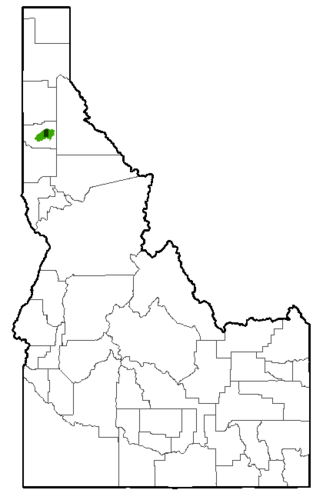Ameletus tolae - A Mayfly
Ameletus tolaeIdaho State Wildlife Action Plan - SGCN Conservation Status Assessment 1
SGCN TIER: 3
Rationale: Regional endemic, data deficient
Range Extent in Idaho: 400 km2 (~200 mi2)
Key Ecological Sections: Bitterroot Mountains
Description: This mayfly is only known to occur in northeastern Oregon and Idaho. In Idaho, it was collected once in 1966 in Benewah County. Whether it is extant in the state is unknown.
HABITAT & ECOLOGY
Environmental Specificity: Narrow: Specialist—key requirements are common.
Description: Specific habitat requirements of this species have not been documented. In general, mayflies in this genus inhabit running waters in mountainous areas, from headwater springs to large rivers.
POPULATION TREND
Short-term Trend: Unknown
Long-term Trend: Unknown
Description: Population trends have not been documented.
THREATS
Overall Threat Impact: Unknown
Intrinsic Vulnerability: Moderately vulnerable
Description: Specific threats to this species have not been identified. In general, mayfly populations are affected by changes in aquatic habitat, such as alteration of flow patterns, streambed substrate, thermal characteristics, and water quality.
CONSERVATION ACTIONS: Surveys are needed to determine if this species is extant in Idaho.
Information Sources: NatureServe. 2015. NatureServe Explorer: An online encyclopedia of life. Version 7.1. Arlington (VA): NatureServe. http://explorer.natureserve.org; Zloty J. 1996. A revision of the Nearctic Ameletus mayflies based on adult males, with descriptions of seven new species (Ephemeroptera: Ameletidae). The Canadian Entomologist 128:293–346.
Distribution 2
Global Range: (100-250 square km (about 40-100 square miles)) It is known from a narrow geographic range including northeastern Oregon (Union Co.) and a single location (probably Benewah Co.) in the southern Idaho panhandle (Stagliano et al., 2007).
Migration 3
Non-Migrant: No. All populations of this species make significant seasonal migrations.
Locally Migrant: No. No populations of this species make local extended movements (generally less than 200 km) at particular times of the year (e.g., to breeding or wintering grounds, to hibernation sites).
Locally Migrant: No. No populations of this species make annual migrations of over 200 km.
Threats 4
Comments: Specific threats to Idaho populations have not been identified. In general, mayfly populations are affected by changes to aquatic habitat, such as alteration of fl ow patterns, streambed substrate, thermal characteristics, and water quality. Alteration and degradation of aquatic habitat is the primary concern for Idaho populations (Stagliano et al., 2007).
Sources and Credits
- (c) Angie Schmidt, some rights reserved (CC BY-SA)
- Adapted by Angie Schmidt from a work by (c) NatureServe, some rights reserved (CC BY-NC), http://eol.org/data_objects/28963477
- Adapted by Angie Schmidt from a work by (c) NatureServe, some rights reserved (CC BY-NC), http://eol.org/data_objects/28963480
- Adapted by Angie Schmidt from a work by (c) NatureServe, some rights reserved (CC BY-NC), http://eol.org/data_objects/28963475
More Info
Range Map

(c) CC-BY Angie Schmidt, Idaho Department of Fish and Game. https://idfg.idaho.gov/species/taxa/32607, some rights reserved (CC-BY)





